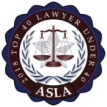The majority of individuals who immigrate to the United States do so based on family relationships or employment opportunities. Those who qualify can pursue a visa, or formal authorization, to enter and work in the country. A Oak Brook employment visa lawyer can explain the specifics of visas for those looking to work in the country.
Employment-based visas come in many varieties, some allow for permanent stays while others are temporary in nature. However, most require the sponsorship of an employer who will document the need for the foreign worker. All these types of visas require strict adherence to U.S. immigration law in order to qualify. An experienced visa attorney in Oak Brook can help you follow the guidelines for getting a one of these immigration permits.
In immigration law, there are various terms that are key to understanding which type of visa to pursue. The two most important terms to distinguish are immigrant visas versus non-immigrant visas. Immigrant visas are those types of visas that allow for a foreigner to stay and work indefinitely in the U.S. These immigrant visas are permanent in nature. On the other hand, non-immigrant visas are those types of permission that will specify exactly how long a worker can stay in the U.S. These visas are temporary in nature. Many of these visas can be renewed if the worker qualifies. A Knowledgeable Oak Brook attorney can help with selecting the right kind of employment visa for an immigrant’s circumstances.
Permanent work visas, also known as non-temporary visas, can be divided into five categories, known as preferences. Seasoned immigrant advisors will refer to first preference or second preference categories, for example. These types of visas are preferred because they offer long-term stability to the foreign worker. The five categories are known as EB-1, EB-2, EB-3, EB-4, and EB-5 visas.
Each category of non-temporary visas is offered to a different set of individuals. The first preference visa is offered to those who have extraordinary professional abilities. The term “extraordinary” is a specially defined legal term. Second preference professionals are considered “exceptional” in their field. Evidence of exceptional characteristics is required.
Third preference workers are either considered skilled, unskilled, or professional. There are limited numbers of these visas available each year. Fourth preference visas are offered to certain special immigrants, a catch-all category that covers an assortment of very unique occupations or family circumstances. The fifth and final permanent employment visa is offered to foreign investors who establish that their investment will benefit the U.S. economy.
Temporary, or non-immigrant, work visas are often instigated by employers or companies that need a foreign individual or foreign team to fill a labor need. When a temporary visa is sponsored by an employer, the employer must petition on the worker’s behalf. Often, an additional step called a “Labor Certification” is involved. Employers who need support with these tricky applications can find help from an Oak Brook employment visa lawyer.
Temporary work visas often resemble alphabet soup. These visas are known as the “H-1” or “H-2” visas. They go by “L”, “O”, “Q” or various other letters assigned to certain visas. Such visas are made available to athletes, entertainers, foreign cultural exchange workers, artists, seasonal workers, intracompany transferees, professionals in specialty occupations, and others. A careful analysis of the strengths of the applicant can help determine which visa is the most appropriate.
Immigration law can feel like a complex maze. The process can be simplified with the help of an experienced attorney. An Oak Brook employment visa lawyer can walk you through the various steps of the visa application and can help you avoid unnecessary obstacles that will delay the process or prevent the grant of a visa. Contact us today for an initial consultation.




